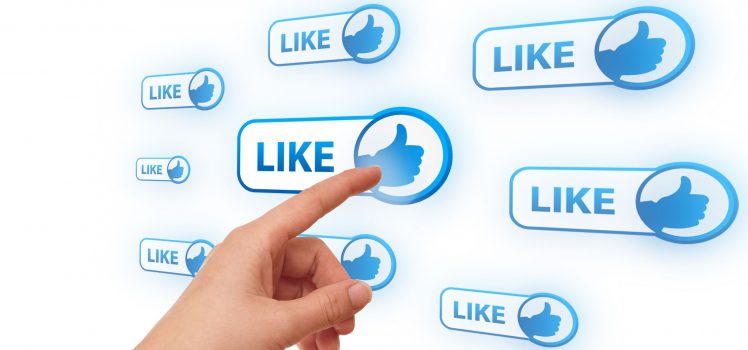Wow, the Audiences Love Facebook ‘Reactions’ but Hardly Use It: An Online Study

In early 2016, Facebook introduced one of its most anticipated updates—the “Reactions” buttons. For years, Facebook users only had the iconic “Like” button to express their approval or support for posts. This limitation led to growing demand for a broader range of emotions that could capture the nuances of reactions to posts, particularly for more sensitive or controversial topics.
To meet this demand, Facebook added five new expressive emoji options to accompany the “Like” button: Love, Haha, Wow, Sad, and Angry. This was seen as a major shift in how Facebook users could interact with content. However, an online study conducted soon after the launch revealed that the much-hyped “Reactions” buttons had yet to live up to expectations in terms of increasing user engagement.
Initial Expectations vs. Reality
When Facebook launched its new emoji reactions in February 2016, many in the industry expected this change to have a profound impact on user engagement. The general belief was that the addition of more emotional expressions would encourage users to interact more frequently with posts, thereby boosting overall engagement metrics like shares, comments, and reactions.
However, a study by a U.S.-based research company analyzed around 130,000 Facebook posts to measure the effectiveness of these new reaction options. The findings were surprising: the added emojis had little to no significant impact on user engagement.
Low Usage of Facebook Reactions
Despite the expectations, the research revealed that the newly added emoji reactions were generating minimal response from users. In fact, according to the study, traditional likes, shares, and comments accounted for a staggering 97% of all user interactions on posts. This means that only a small percentage of users opted to use the new reactions instead of simply liking, commenting, or sharing the content.
These findings suggested that users were either unaware of the new options or were not compelled enough to use them. Facebook had created a more expressive toolset for its users, but for some reason, those tools were not being widely adopted.
Breaking Down the Numbers
In the first phase of research, the study also excluded shares and comments to get a clearer picture of how reactions performed compared to traditional likes. The result? The “Like” button still far outweighed the usage of the other reaction buttons, making it clear that users were largely sticking to the platform’s original engagement method.
Agency Platform, a digital marketing leader, examined this trend from an SEO perspective. For brands, it’s crucial to understand how engagement mechanisms evolve on platforms like Facebook to tailor marketing strategies effectively. At Agency Platform, we focus on driving engagement through multi-channel digital strategies that adjust to these shifting trends.
Which Reaction is the Most Popular?
Of the five new emoji reactions introduced, one emerged as a clear favorite: Love. The research showed that users were more likely to use the “Love” reaction over any of the other expressive emojis when interacting with content. This suggests that users reserve their emotional expressions for content that resonates positively, rather than using more nuanced emotions like “Sad” or “Angry.”
Interestingly, the study also discovered that Facebook’s video posts generated over 40% of audience reactions, making video content far more engaging than image-based posts. Among video posts, the Wow reaction was the second most frequently used emoji, highlighting how users tend to express surprise and admiration when watching video content.
The Power of Video Content
The study’s analysis of video engagement underscores an essential point for marketers and businesses: video content is highly effective at generating reactions and engagement on Facebook. Compared to static image posts or even GIFs, videos capture attention, provoke emotions, and encourage users to interact more frequently.
Furthermore, the Angry reaction was found to have 2x more engagement when paired with video content compared to image-based posts. This reveals a fascinating insight into how users express negative reactions: rather than using the “Angry” emoji on image posts, they’re more likely to engage negatively with videos, possibly because video content evokes a stronger emotional response.
This data points to a growing trend: as video content continues to dominate social media platforms, brands must prioritize producing high-quality, engaging videos. At Agency Platform, we help businesses integrate video into their broader digital marketing strategies. Whether through video SEO or social media optimization, our expertise ensures that your brand’s content reaches and engages the right audience.
Audience Feedback on Negative Reactions
One of the critical benefits of the new reaction buttons was that they allowed users to express negative emotions, like sadness or anger, which the simple “Like” button did not provide. Before these reactions were available, users had no way to express their dissatisfaction or sadness directly on posts, often leading to awkward situations where users had to “Like” posts even if the content was negative.
However, the study found that even with these new options, the number of users opting for the Angry or Sad emojis was relatively low. Most Facebook users still preferred to engage with content that was positive, funny, or entertaining, rather than content that provoked negative emotions.
This suggests that despite the ability to express more complex emotions, users are more likely to avoid negative interactions in favor of positive engagement. From a brand perspective, this means businesses should focus on producing content that elicits positive emotional responses, such as humor, admiration, or love.
What This Means for Marketers and Businesses
For businesses using Facebook as a marketing tool, understanding how users interact with content is crucial for building effective campaigns. While the introduction of Facebook Reactions hasn’t dramatically changed how users engage with content, it has provided insights into the types of content that resonate with different emotions.
At Agency Platform, we take a data-driven approach to social media marketing. We analyze user behavior and engagement patterns to develop strategies that maximize interactions and conversions. The key takeaway for businesses is that video content should be at the forefront of any Facebook marketing campaign. The statistics don’t lie: video posts generate far more reactions and engagement than image-based posts.
Additionally, businesses should pay attention to the type of reactions their content is receiving. While positive engagement like “Love” or “Wow” can indicate successful content, an increase in “Angry” or “Sad” reactions may suggest that your audience is dissatisfied or upset, offering a valuable opportunity to reassess your content strategy.
Conclusion: Leveraging Facebook Reactions with Agency Platform
At the end of the day, it’s the audience’s reactions that matter the most. While Facebook’s Reactions feature may not have revolutionized user engagement as initially expected, it has given businesses a better understanding of how users emotionally connect with content.
At Agency Platform, we specialize in helping businesses optimize their social media strategies to drive engagement, conversions, and brand loyalty. Whether through video content creation, social media SEO, or data-driven content strategies, we ensure that your brand is poised to succeed in the ever-changing digital landscape.
Want to take your social media strategy to the next level? Contact Agency Platform today at sales@agencyplatform.com or call (888) 736-0541(Toll-Free) to learn more about how we can help you engage your audience and grow your business.




